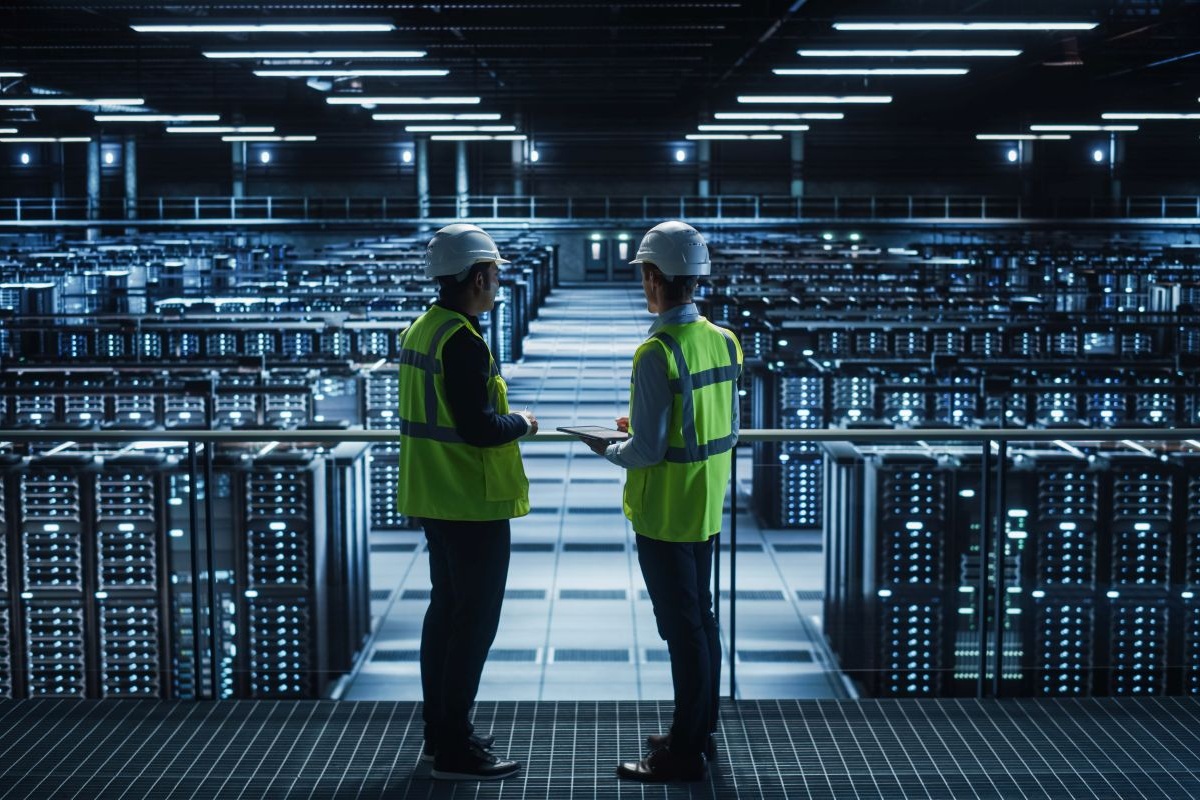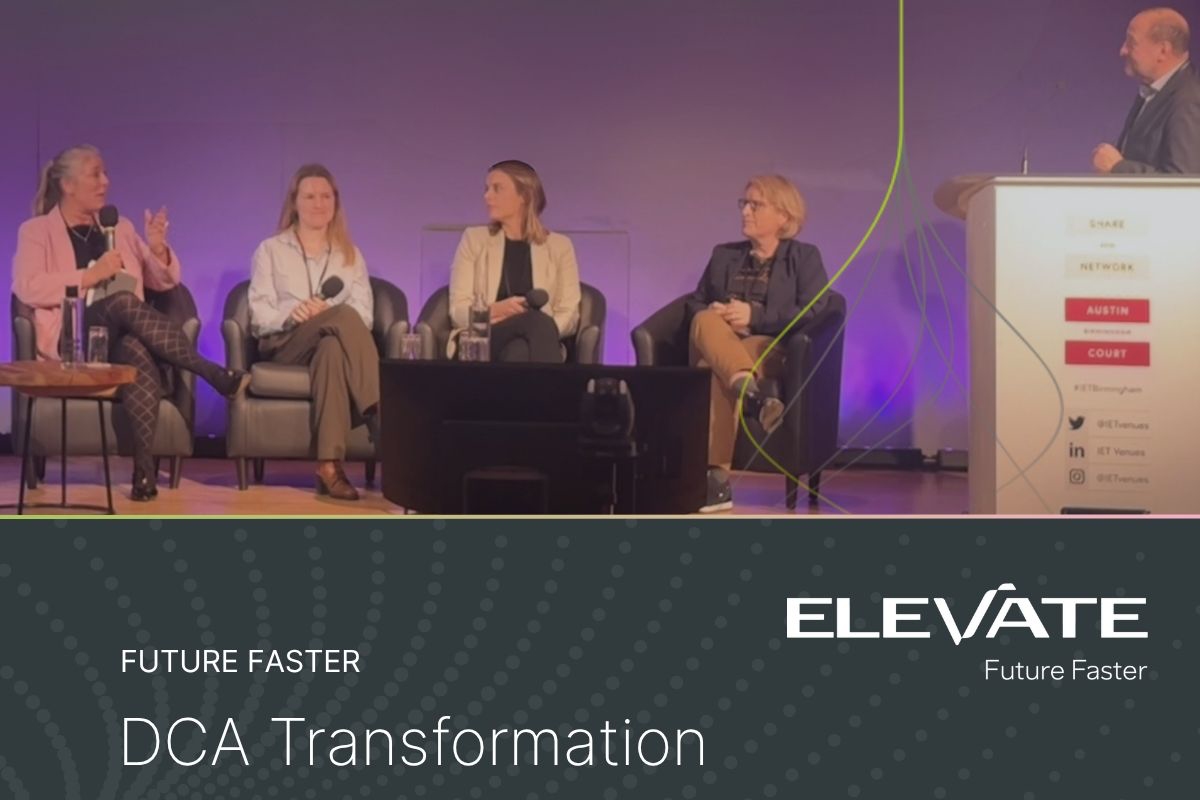Data Centres
Artificial Intelligence in Data Centre Operations
Data Centre Operations: Optimising Infrastructure for Performance and Reliability
Data Centres
News
AI rush deemed "incompatible" with Clean Power Plan
A forecast suggests that the UK data centre boom is at odds with the UK’s clean power commitments, with the sector already overwhelming the electricity system and forcing an unavoidable reliance on gas. This is the view put forward by Simon Gallagher, Managing Director at UK Networks Services, speaking at Montel's UK Energy Day event earlier today (13 November).
Simon said that only firm capacity be counted on in the context of powering data centres, as adverse weather conditions would reduce the availability of wind and solar during periods of low wind and sunlight.
When asked what could realistically power tens of gigawatts worth of near constant data centre load, Simon said his “controversial opinion” was that this demand “is going to have to be met by gas.”
“It’s the only technology we have that can do this on a firm basis. We don’t have storage,” Simon added. This led him to conclude that the sector’s growth was simply not compatible with the UK government’s Clean Power 2030 plans, under which 95% of energy must come from low-carbon sources by the turn of the decade.
Physical limitations
This comes amid an explosion in grid connection requests, jumping from around 17 GW to 97 GW over the summer, pushing the total capacity waiting for connections to the UK grid up to 125 GW.
Simon continued, “About 80% of that is hyperscale data centres. It’s all AI. The impact on our grid is very real – and it just happened.” The UK was “never, ever” going to build the required transmission capacity in time, Simon added, with a new connection taking “at least five years.”
He also outlined how the infrastructure available is not where data centres want to be, adding that such facilities seek sizeable connections “at transmission voltage, in urban areas near fibre.” This would typically site them away from significant power generation zones, which could help to alleviate network constraints and reduce balancing costs.
Earlier today, Dhara Vyas, CEO of trade group Energy UK, told the same event that the UK’s clean energy expansion was being slowed by planning rules and grid connection queues that were “actively deterring investors”.
For more from Montel, click here.
Simon Rowley - 13 November 2025
Data Centre Build News & Insights
Data Centres
Zoom to open new UK data centre
Zoom has announced a major step in its UK growth strategy with plans of opening a UK data centre in 2026, designed to align with the country’s data residency requirements and unlock additional opportunities across regulated industries such as Public Sector, Healthcare, and Financial Services, ultimately offering increased choice for customers.
Louise Newbury-Smith, Head of UK & Ireland, Zoom, comments, “Launching a UK data centre is a significant milestone in Zoom’s journey to provide secure, compliant, and high performance services for all of our customers. By investing in local infrastructure, we are ensuring that organisations across the UK, from financial services to government, can confidently embrace the future of AI first collaboration.”
Zoom has evolved from a video communications platform into a comprehensive AI first collaboration suite. Today, UK organisations use Zoom Workplace for meetings, chat, telephony, workspace reservations, and productivity automation. By hosting services locally, the new UK data centre will help local customers to benefit from both productivity gains and enhanced data residency offerings.
The facility is expected to go live in the first half of 2026 and support a wide range of services including Meetings, Webinars, Rooms, Team Chat, Phone, Notes, Docs and Zoom AI Companion. UK only meeting zones and telephony gateways with local dial in numbers will be available at launch, with additional services such as Zoom Contact Centre and PCI compliance integration phased in shortly after.
UK: A Pillar of Growth and Innovation for Zoom
The UK is one of Zoom’s most dynamic and forward-thinking regions, the company says, consistently ranking as a top market in EMEA. Over the past three years, UK-based organisations, from FTSE 100 companies to public sector bodies, have driven the adoption of hybrid work and next-generation collaboration tools.
Steve Rafferty, Head of EMEA & APAC, Zoom, notes, “Our customers and partners have been clear: local infrastructure, compliance and greater choice over where their data is stored are critical to unlocking digital transformation in regulated industries. This investment demonstrates Zoom’s long term commitment to the UK market, and we are excited to see how it will empower organisations to innovate, collaborate, and thrive.”
In June 2024, Zoom underscored its long-term commitment to the UK by opening the Experience Centre as part of the London office location. This state-of-the-art facility was launched as a hub for innovation, executive briefings, and hands-on demonstrations of Zoom’s evolving collaboration platform.
Since its opening, the London Experience Centre has welcomed over 5,500 guests across customers, partners, and industry leaders, serving as a showcase for how critical the UK market is to Zoom’s broader EMEA strategy. The centre also exemplifies Zoom’s approach: co-creating solutions with and for customers, prospects and partners, supporting digital transformation, and nurturing a vibrant local technology ecosystem.
The new data centre is set to play a pivotal role in Zoom's long-term growth strategy across both the UK and the wider EMEA region. This strategic investment complements Zoom's existing infrastructure in Saudi Arabia, Germany, and the Netherlands, which collectively serve European, Middle Eastern, and African markets.
Through ongoing infrastructure investments, new partnerships, and market-specific innovations tailored to regional-specific needs, Zoom further strengthens presence and deepens roots throughout the region.
Simon Rowley - 6 November 2025
Data Centre Build News & Insights
Data Centre Projects: Infrastructure Builds, Innovations & Updates
Data Centres
News
Colt DCS to expand West London hyperscale campus
Colt Data Centre Services (Colt DCS), a global provider of AI, hyperscale, and large enterprise data centres, has announced that it has received committee approval (Resolution to Grant) from Hillingdon Council to expand its Hayes Digital Park campus in West London with three new hyperscale data centres and an Innovation Hub.
The £2.5 billion investment will strengthen the UK’s digital infrastructure, support the government’s modern industrial strategy, and help drive the nation’s growing AI economy.
The three new hyperscale data centres - London 6, 7, and 8 - will be powered using 100% renewable energy through a Power Purchase Agreement (PPA). Power contracts for this development have been secured with National Grid and a high voltage supply is due to be delivered by October 2027. The expansion will add an additional 97MW to the available IT power at the Hayes Digital Park, taking the total capacity to 160MW. Construction is expected to start in mid-2026, with the first data centre (London 6) scheduled to go live in early 2029. Once operational, the new facilities will create over 500 permanent jobs, training more than 50 technical apprentices over a 10-year build programme.
In addition to the data centres, Colt DCS will develop an Innovation Hub in partnership with Brunel University, designed to serve as a community space and incubator for digital start-ups. The hub will promote economic synergy by co-locating light-industrial and digital innovation businesses, creating opportunities for collaboration, research, and skills development within an affordable workspace. Students from Brunel University will be encouraged to use the hub to develop entrepreneurial projects and technology-led ventures to support the digital economy.
AECOM has been appointed to develop the design proposals for the Innovation Hub. The facility aims to act as a base for innovation and community engagement, with flexible space for future industrial use, in line with planning policy for Strategic Industrial Land. It will also provide social value by hosting local events themed around culture, food, film, music, and literature.
The new development will also deliver a district heating network, using waste heat from the data centres to support local businesses, communities, and residential buildings. Under the planning permission, back-up generators will only be permitted to operate for a maximum of 15 hours per year, with the data centres powered directly from the national grid.
“This announcement marks another important milestone for the UK’s digital economy,” says Xavier Matagne, Chief Real Estate Officer at Colt DCS. “Data centres are a cornerstone of digital transformation. With this expansion, we can help power innovation, support the AI revolution, and contribute to the energy transition.”
Xavier continues, “Our new campus in Hayes, including the Innovation Hub in partnership with Brunel University, will drive community value, from reusing heat for district heating to creating jobs, skills, and long-term investment. As one of the few operators capable of delivering new capacity in this area of London over the next decade, we’re proud to be helping power the UK’s future economy in a sustainable and inclusive way.”
Cllr Steve Tuckwell, Hillingdon Council's Cabinet Member for Planning, Housing and Growth, notes, "Hillingdon is open for business, and we're working closely with our business community, new and existing investors and partners to drive innovation and development in the right places.
"The innovation hub is an exciting new development that will help to foster economic growth. It will help to equip residents and smaller local businesses with the right skills, affordable workspaces, and opportunities to thrive.
"Hayes is playing a leading role in shaping London's digital economy and infrastructure and it's vital local people have more opportunities to experience the benefits."
For more from Colt DCS, click here.
Simon Rowley - 5 November 2025
Data Centres
Events
News
Sponsored
Datacentre Innovation Series 2025 announced
In an age where digital transformation is pivotal for every industry, TraiCon Events says it is proud to announce the Datacentre Innovation Series 2025, taking place on 10 December 2025 at the Park Hotel in Hyderabad, India.
This premier event will focus on the future of data centres, exploring new technologies, sustainability practices, and cutting-edge innovations that are reshaping the industry.
Transforming India’s data centre landscape
India’s data centre industry is on the brink of a major revolution, driven by cloud adoption, data sovereignty, AI, and the growing need for digital infrastructure.
With a rapidly expanding digital economy and increased reliance on cloud computing, India is investing heavily in modernising and expanding its data centre ecosystem.
The focus is on scalability, resilience, sustainability, and ensuring that data protection and privacy are at the forefront.
The Datacentre Innovation Series 2025 will delve into the most pressing topics such as edge computing, data centre automation, 5G infrastructure, green data centers, AI-driven operations, and cybersecurity.
Who should attend?
This high-level strategic forum will bring together more than 250 senior-level professionals, government officials, industry experts, technology innovators, and decision-makers to discuss the future of India’s data infrastructure and the rapidly evolving landscape of digital transformation.
Attendees will include:
• Data centre operators & providers• Cloud service providers (CSPs)• Telecom operators• Government & regulatory officials• Technology innovators & solution providers• Data security & privacy experts• Sustainability leaders• Data infrastructure investors• Designers & engineers of data centres• Academia & research institutions• Telecom & IT analysts
Why this series and why now?
India’s data centre industry is witnessing unprecedented growth, with an increasing focus on sustainability, cloud-first strategies, and the future of edge computing.
As the nation drives towards digital India initiatives and addresses data sovereignty concerns, it’s essential to stay ahead of the curve with the latest technologies and best practices.
With the rise of 5G, AI, and IoT, the demand for robust, scalable, and secure data centres is higher than ever before.
The Datacentre Innovation Series 2025 will equip professionals with the knowledge and strategies required to tackle the evolving challenges and ensure that India’s data centre ecosystem is ready for the demands of the future.
Joe Peck - 28 October 2025
Data Centres
Events
Sponsored
Elevate sparks dialogue at DCA Transformation 2025
Elevate – Future Faster, the data centre brand from Excel Networking, was represented by Rebecca Nye at the DCA Data Centre Transformation 2025 event held at IET Birmingham this week.
Rebecca joined a distinguished panel to discuss the evolving demands of the data centre sector and the bold questions shaping its future.
The panel, hosted by Mark Acton (DCA), featured industry leaders including Jovita Januskeviciute (JLL), Anastasia Wills (NGED), and Dr Sharon Richardson (Hoare Lea). Together, they explored:
• The immediate and long-term future of data centres
• The impact of AI on power requirements and infrastructure planning
• How far ahead we can realistically predict the digital landscape
• The role of nuclear power and the need for greater education around the importance of the data centre industry
Rebecca highlighted Elevate’s strengths in supporting clients through stock availability, reduced lead times, and just-in-time delivery - all critical factors in helping customers meet project timelines and scale with confidence.
Rebecca comments, “Elevate is here to accelerate transformation, challenge convention, and support our customers in navigating the complexities of tomorrow’s data centre environment.
“We’re seeing a shift in expectations. It’s not just about capacity anymore; it’s about agility, speed, and foresight.
“Elevate is committed to helping our partners stay ahead of the curve. We’re not just imagining the future; we’re building it."
Elevate – Future Faster continues to lead the charge in delivering high-density fibre solutions, containment solutions, ducting, and intelligent power distribution, alongside strategic partnerships with global innovators such as nVent, Sunbird, Senko, Schleifenbauer, and more.
For more information about Elevate and its mission to bring the future faster, reach out to Rebecca directly on Linkedin, visit Elevate's website, or follow Elevate on LinkedIn.
For more from Elevate, click here.
Joe Peck - 24 October 2025
Data Centres
Events
News
Sponsored
Data centres in the fast lane
Elevate – Future Faster is inviting industry professionals to join 'Data Centres in the Fast Lane', an afternoon of high-octane insight and networking at the F1 Arcade, St Paul’s, London.
Beginning with lunch at 12:00 and running through to prize giving at 18:00, the event marries technical depth with experiential energy.
Over five keynote sessions, speakers from Elevate, nVent, Sunbird, Senko, Axis, and RED Engineering will address critical challenges in modern data centre design. Highlights include:
• Cutting-edge rear-door and direct-to-chip cooling by nVent• DCIM strategies for ESG and operational reporting by Sunbird• High-performance fibre connectivity from Senko• Secure surveillance from perimeter to rack via Axis• Hybrid, future-ready infrastructure design by RED Engineering
After the presentations, attendees can compete in F1 racing simulators, with prizes for top performers and teams.
Spaces are limited and securing your spot ensures access to both technical discourse and an immersive experience. If you want to take part, you can register by clicking this link.
For more from Elevate – Future Faster, click here.
Joe Peck - 26 September 2025
Data Centre Build News & Insights
Data Centres
News
EcoDataCenter breaks ground on mega campus in Borlänge
EcoDataCenter has started construction of the new mega campus Kvarnsveden in Borlänge, Sweden. The project represents a long-term establishment of significant industrial scale, with the first data centre at the site scheduled for completion in early 2027.
Peter Michelson, CEO of EcoDataCenter, comments, “This is a historic day for EcoDataCenter, for Borlänge, and for Sweden. AI infrastructure is a new base industry, and Kvarnsveden will play a key role in supporting digitalisation. The facility in Borlänge will become one of the largest projects of its kind in Europe.”
At launch, EcoDataCenter 2 in Borlänge will have access to 250 MW, with the potential to scale up to 600 MW. The development follows EcoDataCenter’s acquisition of the former Kvarnsveden paper mill in 2024, creating a unique opportunity to transform an industrial landmark into a hub for next-generation technology.
Peter continues, “The facility once produced paper – the raw material of the newspaper information age. Now, Borlänge will produce the raw material for AI and the next information age.”
In parallel with the construction start, EcoDataCenter has also signed an exclusive agreement to acquire additional land at the site, ensuring additional capacity to meet the rapidly growing demand for compute power.
Erik Nises (S), Chairman of the Municipal Board in Borlänge, concludes, “We value what EcoDataCenter brings to our municipality and are pleased that construction can begin so soon after the site acquisition. We look forward to seeing the Kvarnsveden paper mill brought to life in a new form,” says Erik Nises (S), chairman of the municipal board in Borlänge.
For more from EcoDataCenter, click here.
Simon Rowley - 24 September 2025
Data Centre Infrastructure News & Trends
Data Centres
News
CDM unveils DC platforms for the AI era
Compu Dynamics Modular (CDM), an AI-era modular data centre solutions company drawing on Compu Dynamics’ two decades of comprehensive data centre expertise, has launched two modular data centre solutions engineered to overcome the toughest data centre bottlenecks: ultra-high density, rapid deployment, and seamless scaling across edge to core. The CDM L Series is purpose built and optimised for AI learning/training and ultra-high-density workloads, and the CDM I Series is an all-in-one solution designed for AI inference at the edge.
Ron Mann, Vice President of Compu Dynamics Modular, comments, “With AI pushing traditional infrastructure limits and no end in sight, we’ve developed two unique, purpose-built modular data centre solutions for learning, inference, and edge. Designed for efficiency and flexibility, these solutions ensure our customers never have to compromise. CDM is redefining the possibilities of modular data centres, and our products are built to handle the requirements of tomorrow’s landscape.”
As AI workloads grow exponentially, CDM believes that traditional data centres are increasingly falling short in terms of meeting speed, density, and flexibility requirements. CDM’s two new platforms will address this challenge by offering customers solutions for both AI and edge workloads, which demand different densities, scales, and deployment models.
“These innovative new platforms are the result of 20-plus years of expertise in data centre design and deployment,” states Steve Altizer, President and CEO of Compu Dynamics. “The Compu Dynamics Modular team has created two much-needed solutions that are built to grow and evolve with the applications they support.”
Features of the CDM L Series include:• Purpose built and optimized for ultra-high density AI workloads• Engineered for 50–250+ kW per rack• Scalable from 1.5 to 3+ MW• Dual-module architecture, delivering powerful performance for next-generation AI applications• Ideal for hyperscale, colocation, and GPU-intensive environments• Designed and built in the USA• Customisable base module and open OEM integration
Features of the CDM I Series include:
• Designed for edge deployments requiring fewer AI racks, or lower IT density per module• Engineered for 50–250+ kW per rack• Supports up to 500 kW per module with air cooling and 1+ MW with combined air and liquid cooling• Compact, all-in-one architecture to reduce space, streamline deployment and reduce complexity• Ideal for telecom, healthcare, education, and government sectors• Designed and built in the USA• Customisable base module and open OEM integration
Both platforms also offer fast, flexible deployment and seamless scalability, as well as being technology neutral, supporting multiple IT hardware and infrastructure OEM equipment sources with no vendor lock-in. CDM provides full-service, end-to-end support for these platforms, from evaluation to delivery and ongoing preventive maintenance. The company’s turnkey and vendor-neutral approach to modular solutions accelerates deployment while reducing costs. With this launch, CDM says that it is empowering customers to face the AI era fully prepared and confident in the company's infrastructure.
For more from Compu Dynamics Modular, click here.
Simon Rowley - 17 September 2025
Data Centre Operations: Optimising Infrastructure for Performance and Reliability
Data Centres
Edge Computing in Modern Data Centre Operations
News
Duos deploys fifth edge data centre
Duos Technologies Group, through its operating subsidiary Duos Edge AI, a provider of adaptive, versatile and streamlined edge data centre (EDC) solutions tailored to meet evolving needs in any environment, has announced its latest data centre deployment towards its anticipated goal of 15 deployments by the year's end.
The latest EDC is in partnership with Dumas Independent School District to deploy an on-premise EDC in Dumas, Texas. This project marks another milestone in Duos Edge AI’s expansion into rural communities, providing low-latency compute and connectivity that directly support K-12 education and regional growth.
The Dumas ISD edge data centre will serve as a localised hub for real-time data processing, enabling advanced educational tools, stronger digital infrastructure, and improved connectivity for students and staff across the district.
“As Director of Information Technology for Dumas ISD, I am excited about our partnership with Duos Edge AI,” says Raymond Brady, Director of Information Technology at Dumas ISD. “This collaboration brings direct, on premise access to a cutting-edge data centre, an extraordinary opportunity for a rural community like Dumas. It will significantly strengthen the district’s technology capabilities and support our mission of achieving academic excellence through collaboration with students, parents, and the community. I look forward to working with Duos Edge AI as we continue to provide innovative technology for our students and staff, ensuring every student is prepared for success.”
“This partnership with Dumas ISD is a perfect example of how edge technology can create lasting impact in rural communities,” adds Doug Recker, newly appointed President of Duos Technologies Group and the founder of subsidiary, Duos Edge AI. “By placing powerful computing infrastructure directly on campus, we’re helping schools like Dumas unlock real-time digital tools that drive student achievement, workforce readiness, and community growth.”
This deployment is part of Duos Edge AI’s broader 2025 plan to establish 15 modular EDCs nationwide, with a focus on underserved and high-growth markets. By locating advanced computing infrastructure closer to end users, Duos Edge AI ensures reliable, secure, and scalable technological access for schools, healthcare facilities, and local communities.
For more from Duos Edge, click here.
Simon Rowley - 17 September 2025
Data Centre Build News & Insights
Data Centres
News
Renewables and Energy: Infrastructure Builds Driving Sustainable Power
Microgrids are key to accelerating DC growth, research finds
A combination of renewables, grid balancing engines and energy storage make for the most cost-effective microgrids to power data centres, while also cutting emissions and providing vital grid balancing to enable the energy transition, according to a new research paper from technology group Wärtsilä and energy solutions business AVK.
The paper, Data centre dispatchable capacity: a major opportunity for Europe’s energy transition, provides new analysis on how data centre microgrids can reduce grid infrastructure spending, emissions and wasted energy, while providing a balanced path for the energy transition.The analysis finds that powering the data centres across Europe by optimised microgrids could create a significant bank of dispatchable power, supporting the entire continent’s energy transition.
The rapid growth of AI is driving increased demand for data centres across Europe, which is expected to increase by 250% by 2030, from 10GW to 35GW. With the continent’s grid facing constraints from high energy prices and bloated grid connection queues, data centre operators are increasingly turning to off-grid solutions to power these energy-intensive assets.
Anders Lindberg, President of Wärtsilä Energy and Executive Vice President of Wärtsilä, says, “The growth of AI over recent years has been extraordinary, and as it continues to transform the way we live and work, it drives a need for more energy. This is causing significant challenges for grid operators across Europe, who are struggling with rising costs and up to a 10-year waiting time for a grid connection.
“By investing in microgrids, data centres can sidestep energy constraints, and with the right technology mix of renewables, grid balancing engines and energy storage, can ensure their emissions profiles and costs do not outweigh the huge benefits that AI brings.
AVK CEO Ben Pritchard comments, “The answer to the challenges we face in combatting climate change is as much to do with changing behaviours as developing new technologies. And the key to behavioural change is the recognition that there are different ways of doing things. The solutions outlined in this paper are not impractical; they are based on real-world cases and calculations. All that’s needed to make them more widespread is for investors, operators, equipment suppliers, planners, policy makers to recognise the widespread benefits that sharing dispatchable data centre capacity with the grid can bring and pass that knowledge on.”
In addition to benefits created by microgrids, engine power plants bring cost efficiencies to data centre power generation. Modelling an 80MW data centre, a combination of engine power plants, renewables, and energy storage provides the lowest levelised cost of electricity – at 108 EUR/MWh – in comparison to three other real-world scenarios. It also offers a low emissions scenario in comparison to the other modelled scenarios, and particularly in comparison to gas turbines. The emissions of engine power plants can also decrease as sustainable fuels become commercially available.
“Through investing in flexibility, microgrids can have the lowest possible cost, while cutting emissions dramatically compared to other pathways including turbines. This flexibility can have a significant, positive impact on the continent’s digital and energy transition,” Anders Lindberg states.
On current trajectories, 40% of existing AI data centres will be operationally constrained by power availability by 2027. Microgrids can take this new strain off the grid in the short term and when grid connection is achieved, excess energy generated can be sold. As well as furthering cost reductions for data centre operators, this can provide vital flexibility to Europe's power challenges.
Read the new research paper by clicking here.
For more from AVK, click here.
Simon Rowley - 16 September 2025

Head office & Accounts:
Suite 14, 6-8 Revenge Road, Lordswood
Kent ME5 8UD
T: +44 (0)1634 673163
F: +44 (0)1634 673173









